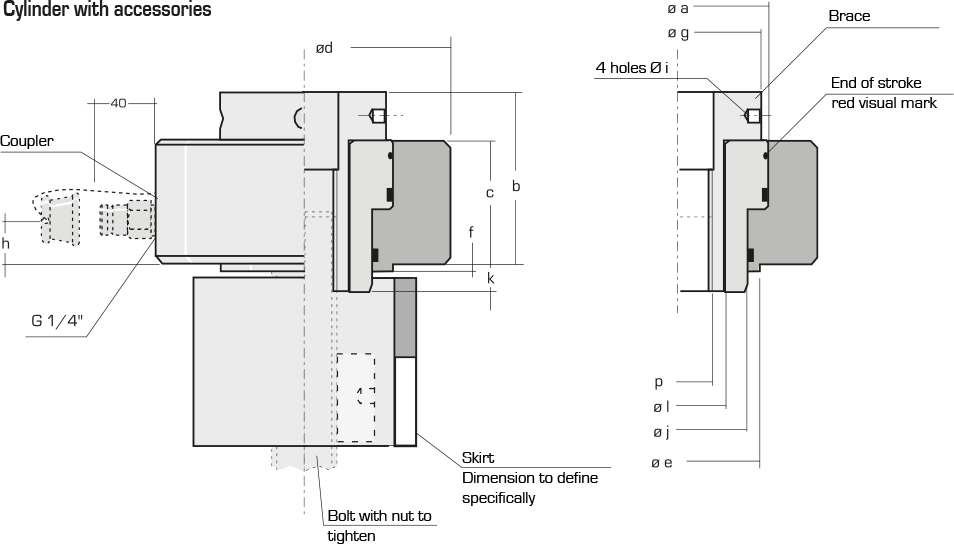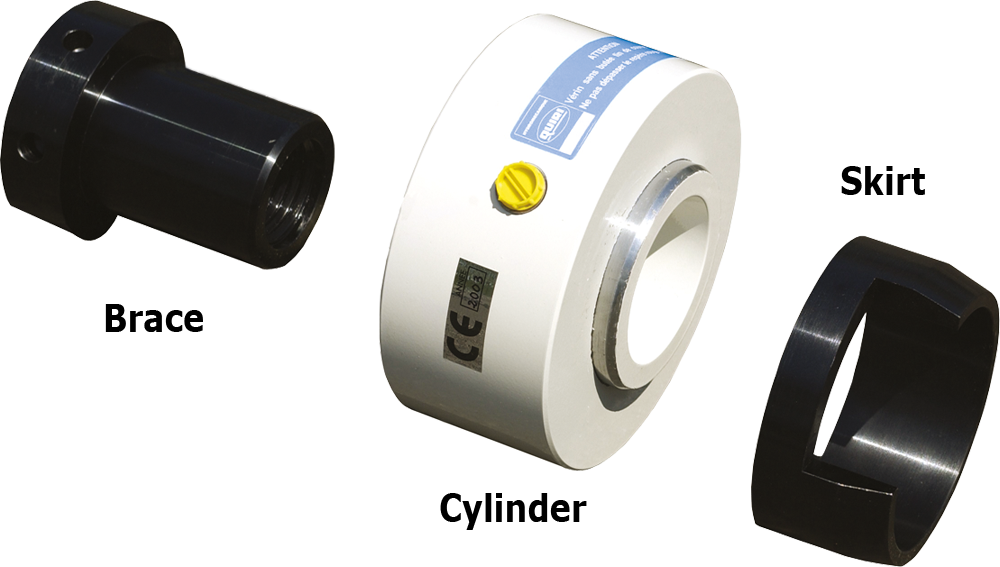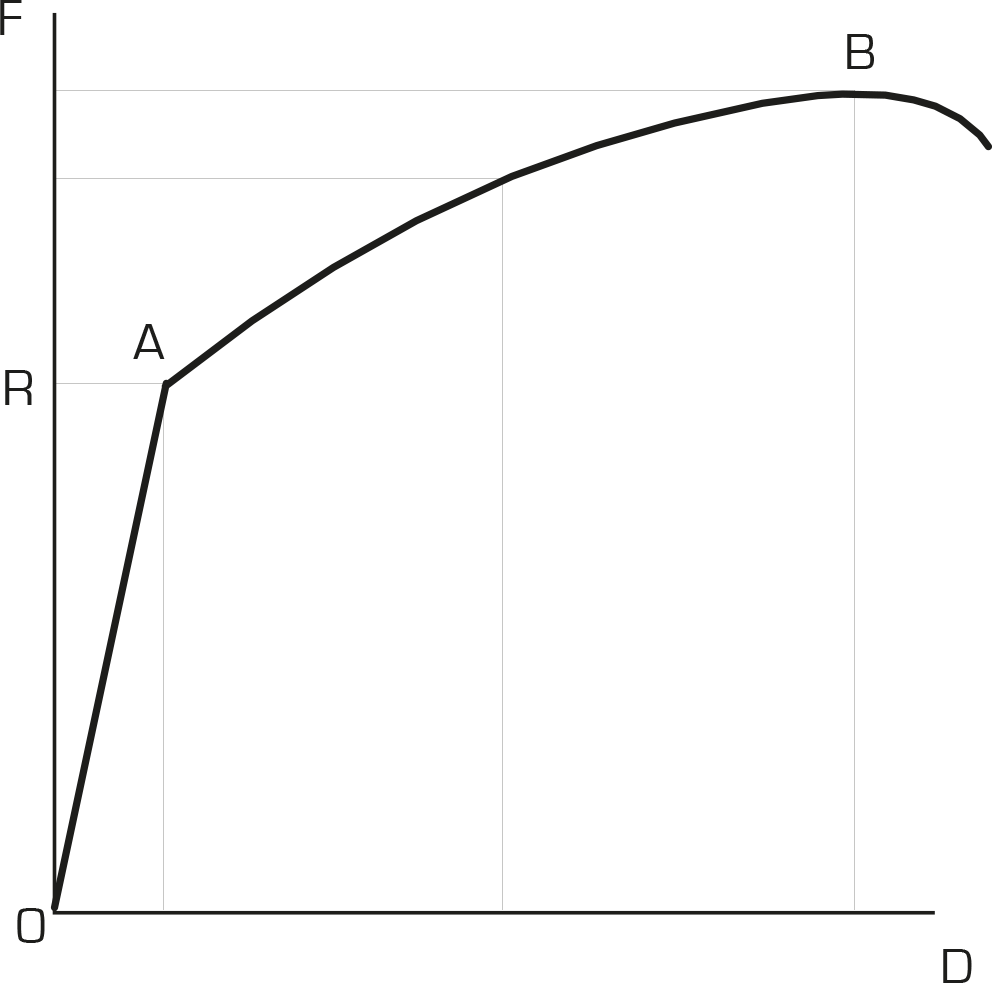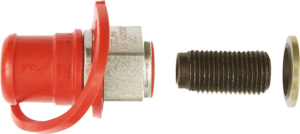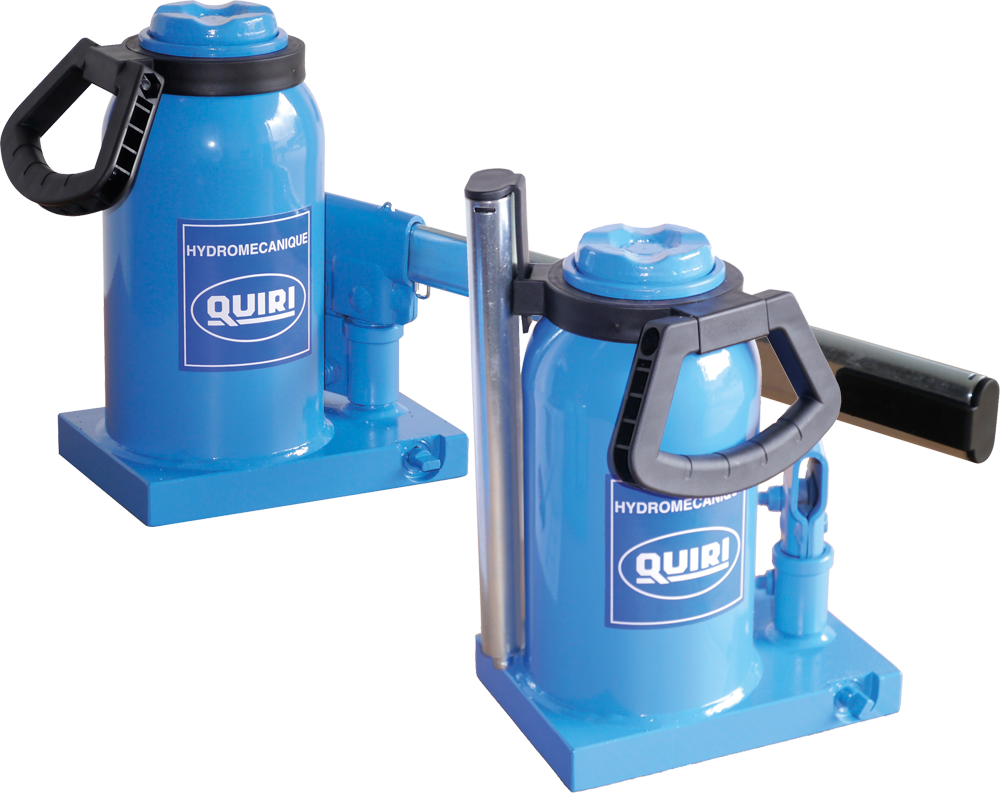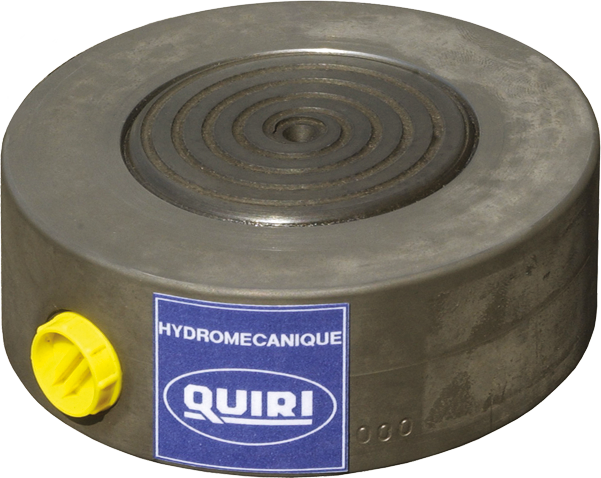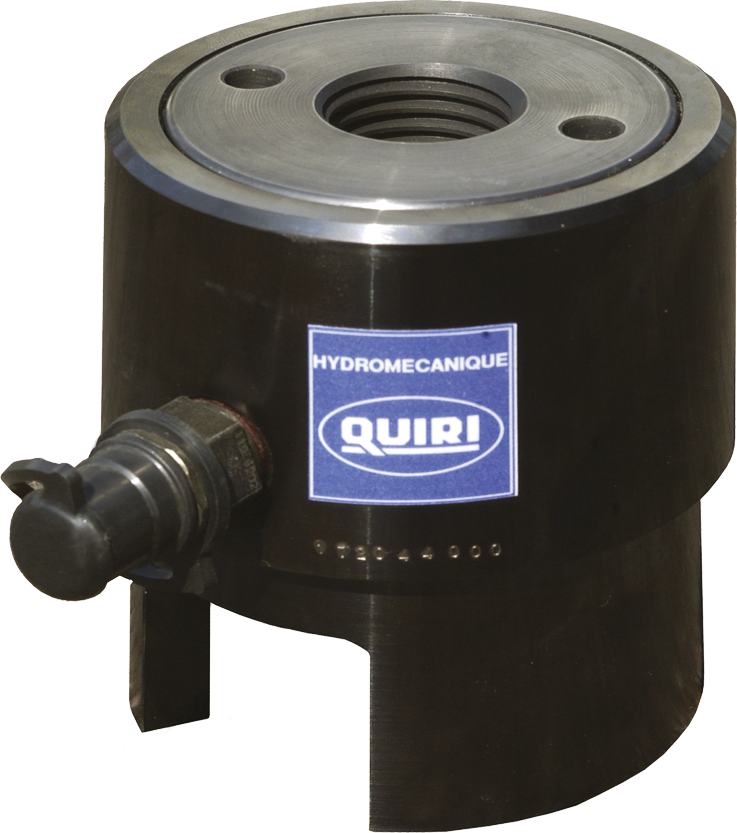
Bolt tension cylinders – STC

• Single acting, load return
• Chrome plated piston rod
• End of stroke red visual mark
A bolt tension cylinder fitted with an internally threaded brace is attached to a bolt. By applying hydraulic pressure with a pump, the bolt is pulled in an axial direction. The nut can then be simply tightened by hand through the opening in the skirt. When hydraulic pressure is released the correct bolt tension is achieved.
To use a bolt tension cylinder in all safety, you should check:
• That the brace thread is the same as the bolt thread.
• Before assembly, that the nut is fully screwed down.
• That there is sufficient room around the bolt to accommodate the QUIRI bolt tension cylinder. If there is insufficient space for the standard unit please check with our technical department for a solution.
• That the bolt thread is long enough to allow the correct engagement of the brace insert. (Length of thread above the nut should be at least equivalent to the diameter of the bolt, ie. M24 bolt thread length 24 mm).
• Put the skirt and cylinder on the bolt to tension.
• Screw the brace on the bolt.
• Connect the pump to the cylinder.
• Close the release valve of the pump.
• Pump up to the necessary pressure.
• Turn the nut with a bar.
• Release the pressure.
• When the bolt is tensionned, unscrew the brace, put the cylinder on the next bolt and do the same operations.
All steel when stretched suffers a deformation which can be calculated with the aid of the formula below (Hooke’s Law):
The formula for the stretching calculation is:
D = (F . L) / (S . E)
D = Total stretching in mm
F = Pulling effort in daN
L = Initial length in mm
S = Effective area in mm²
E = Elasticity in daN/mm²
TYPICAL ELASTIC TEST OF STEEL BAR
In the area OA of the graph the elongation is small and proportional to the effort. (Hooke’s Law) Point ’A’ on the graph is known as the elastic limit. This is the point where once the effort reaches a level ’R’ and then is released the steel bar returns to its initial length. (No permanent deformation).
In the area AB of the graph elongation is no longer proportional to effort. From A onwards the elongation is permanent (Plastic Period). Therefore, when tensioning bolts you should not apply forces that will cause elongation beyond the elastic limit, otherwise permanent deformation will occur.
You must therefore work out the maximum pressure to be applied before reaching the elastic limit. The pressure to be applied by the pump is given by the mechanical specifications of the bolt as in the formula shown:
P < (R . S) / A
P = Maximum acceptable pressure in daN/cm²
R = Bolt elastic limit in daN/mm²
S = Bolt effective area in mm²
A = Effective tension cylinder area in cm²
